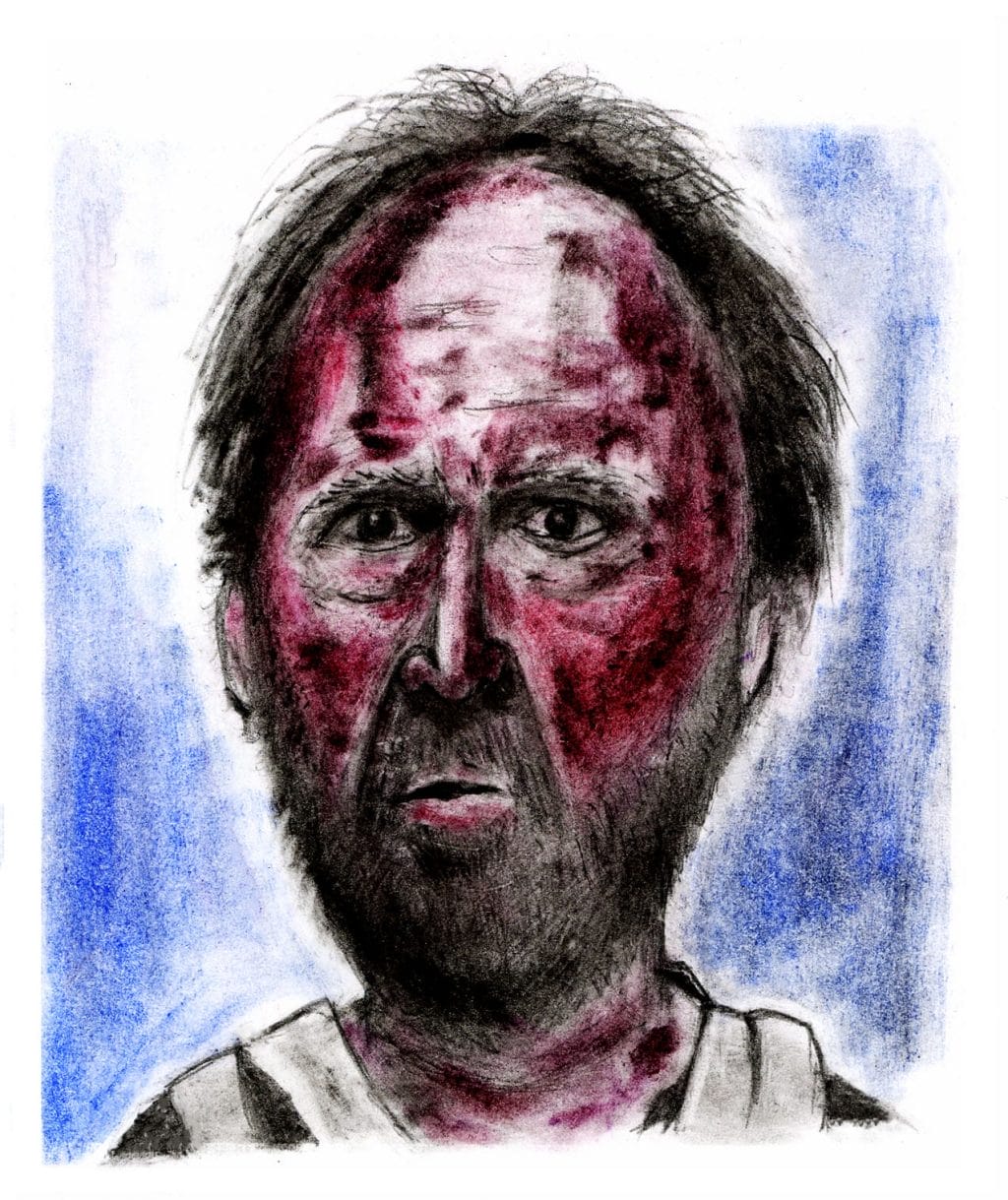Sam’s Take: Arthouse meets Heavy Metal in “Mandy”

Illustration by Adam Goodman
Samuel Goodrich, Contributing Writer

In the new Panos Cosmatos film “Mandy,” there is a scene where Nicholas Cage’s Red Miller tries to explain to another character what horrible thing has happened to him — his wife has been brutally murdered by a Christian extremist cult — and Miller struggles to find the words to describe the monstrous people he has just had the misfortune of meeting.
That same loss for words is what I currently feel writing this review. The only difference is that while I adored this film, the issue is finding a way to do it justice with simple text.
The first half of the film shows us this love between Miller and the titular Mandy, played wonderfully by Andrea Riseborough. It’s a slow burn filled with beautiful imagery and subtle character development, with a sense of dread and lurking evil behind every scene. The cinematography is striking, both in the way locations are filmed and the all-encompassing red colors filling the frame.
Once the villains of the film — the extremist cult run by failed folk singer Jeremiah Sand — are introduced, “Mandy” begins to turn into something more sinister. The visual effects and cinematography are more disorienting, the pace is slower and hypnotic and the events themselves are heart-wrenching.
Once Mandy is killed by the cultists, the film starts to reflect Miller’s mental state. He becomes deranged, painful and vengeful. Here, Cage comes out in full force, managing to capture the once-hopelessness of loss that becomes an insatiable thirst for violence.
In this second half, the revenge is gloriously extreme and the situations more absurd — in general it becomes an exploitation film with a dash of arthouse sensibilities. There is a chainsaw fight between Miller and a crazy cultist, but there are also gorgeous shots of Miller riding through an abandoned forest with red brake lights devouring everything in his wake.
These two halves might feel disjointed, unable to fit together as their tones wonderfully clash. But somehow, I understood the structure the more I thought about the themes of the film — specifically about love and how the characters interpret it.
I’ll be honest though, I’m not sure I fully grasp “Mandy.” Many scenes I don’t understand, despite having clear metaphorical or symbolic meaning. The cinematography is gorgeous, the structure is unconventional, and each half would be a great movie in its own right.
What makes Cosmatos’ film special is not only how it mixes these two halves in a cohesive whole, but how it crafts a unique experience that begs for multiple viewings. The film is a descent into madness, a dream that morphs into an apocalyptic, drug-fueled nightmare.
This experience is made all the more intense and palpable thanks to Jóhann Jóhannsson’s final score, which perfectly accents the beautifully-haunting imagery with an equally effective soundtrack.
Behind the insanity, there is something being said about the different ways people view and experience love, how these experiences change us and the power of music. We may never know the answers and these answers might not be in the film.
In one sequence, Jeremiah monologues to a drugged-up Mandy, describing his life. This moment is portrayed by having the actor’s face fill a majority of the screen, his eyes piercing every viewer’s soul as the visual effects distort his features. In this moment, I forgot I was in a theater. I was consumed by the frame; the film took hold of me. I had a special experience unlike anything I’ve had in a theater, at least not in a long time.
“Mandy” is the essence of subjective filmmaking, designed to allow the audience to understand the emotions these character feel, rather than understand a cohesive plot or objective reality. There are things to understand within the film, but “Mandy” accomplishes what the best movies often do, which is make the experience of watching the movie just as enjoyable as discussing and analyzing it long after that experience has ended.


